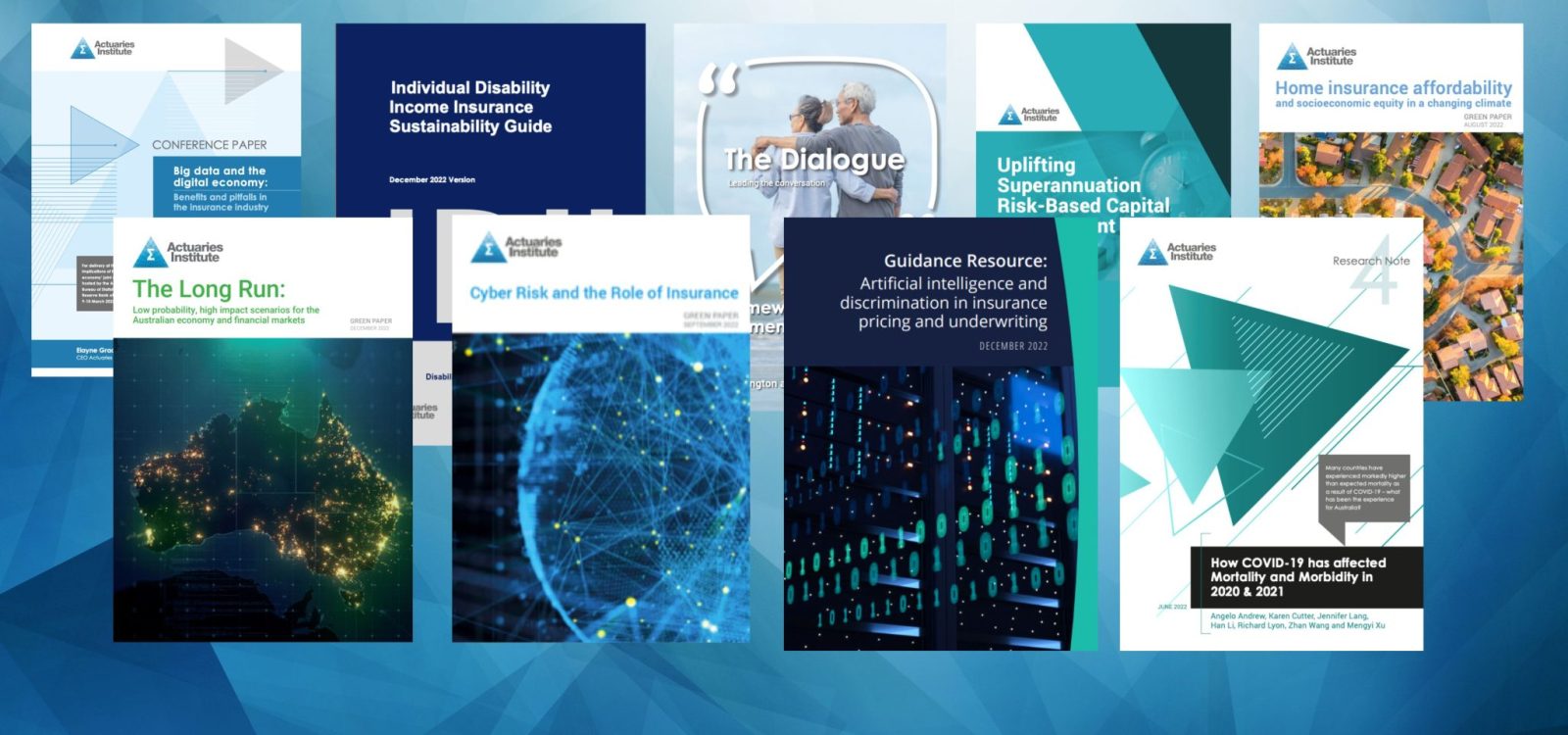
Public Policy & Practice Excellence in 2022
The Institute’s public policy presence has been strong through 2022, with major publications being very timely and the stream of submissions to government, regulator and independent agency consultations being high.
A snapshot attests:
- 9 major papers published
- Revised Disability Insurance Taskforce materials published
- More than 30 submissions and various other representations made and;
- Two Federal Budget Updates delivered on the Budget nights for members.
As a result of these and other events promoting the profession, there have been 380 media mentions.
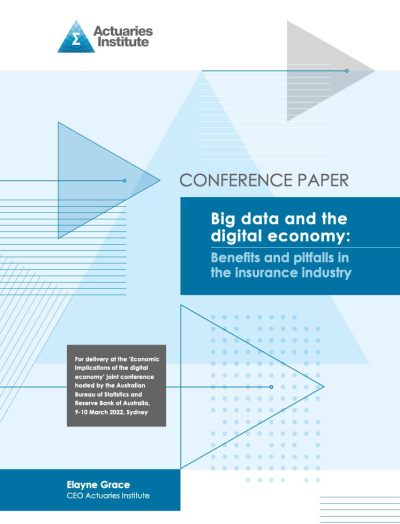
The tone for the year was set early, in March, by Institute CEO Elayne Grace at a joint ABS and RBA Conference with a paper on Big data and the digital economy: Benefits and pitfalls in the insurance industry. The paper highlights the opportunities and challenges of big data, data analytics and artificial intelligence, both across the general economy and specifically in insurance.
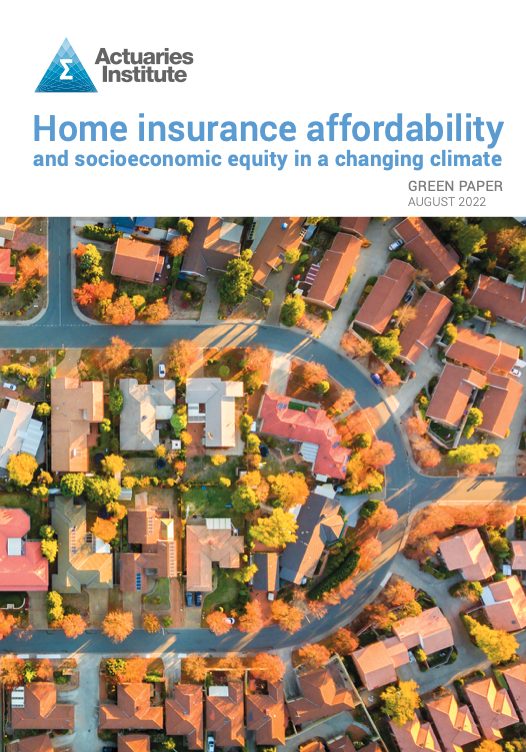 The Green Paper, Home insurance affordability and socioeconomic equity in a changing climate, articulates clearly how the intersection of address-level pricing, digital innovation, and the changing climate are impacting risk pools in insurance. This Green Paper also continues the journey begun by Andrews and Lau in 2019[1] and nurtured by the General Insurance Affordability Working Group in 2020[2]. It addresses previous data limitations, models climate change projections under different scenarios at local levels and aggregates the results to understand the national picture. It finds one million households already face significant affordability pressure for home buildings and contents insurance and they will be disproportionately affected by the changing climate. The paper outlines a comprehensive suite of policy solutions.
The Green Paper, Home insurance affordability and socioeconomic equity in a changing climate, articulates clearly how the intersection of address-level pricing, digital innovation, and the changing climate are impacting risk pools in insurance. This Green Paper also continues the journey begun by Andrews and Lau in 2019[1] and nurtured by the General Insurance Affordability Working Group in 2020[2]. It addresses previous data limitations, models climate change projections under different scenarios at local levels and aggregates the results to understand the national picture. It finds one million households already face significant affordability pressure for home buildings and contents insurance and they will be disproportionately affected by the changing climate. The paper outlines a comprehensive suite of policy solutions.
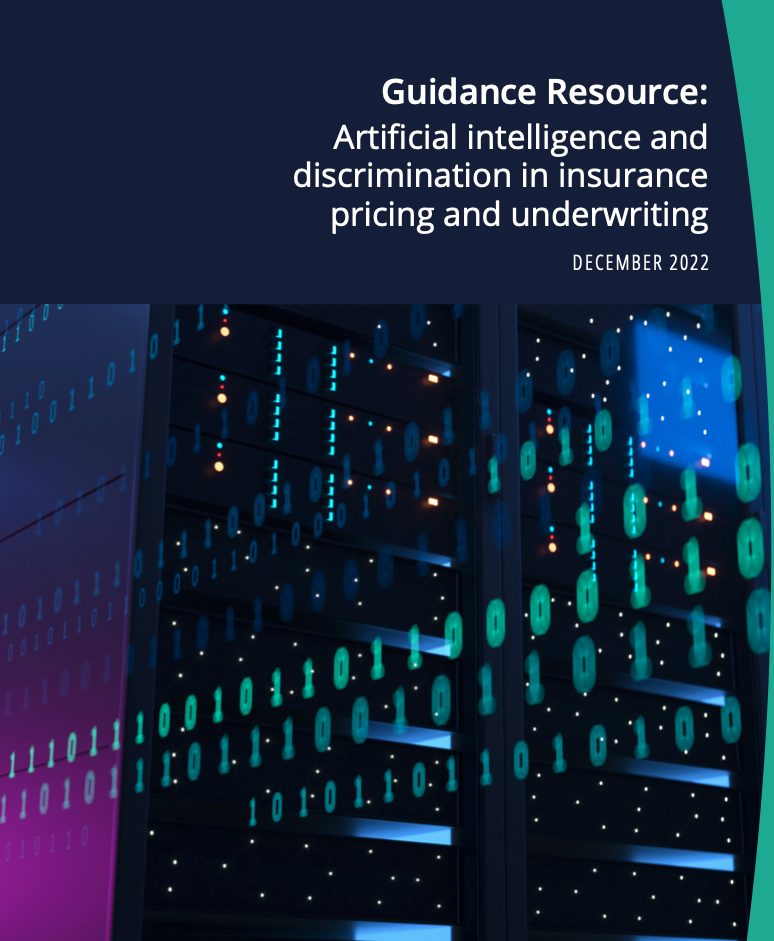 The Guidance Resource: Artificial intelligence and discrimination in insurance pricing and underwriting, attempts to solve a regulatory outworking highlighted in the ABS and RBA conference paper. The Guidance Resource is designed to assist actuaries to understand how, in a world of big data and artificial intelligence where the risk of being able to identify a ‘protected attribute’ is elevated, they can continue to comply with the federal laws protecting against antidiscrimination and the special exemptions and exception insurers have from those laws. This work was a collaboration between the Australian Human Rights Commission and the Institute, supported by the Antidiscrimination Working Group.
The Guidance Resource: Artificial intelligence and discrimination in insurance pricing and underwriting, attempts to solve a regulatory outworking highlighted in the ABS and RBA conference paper. The Guidance Resource is designed to assist actuaries to understand how, in a world of big data and artificial intelligence where the risk of being able to identify a ‘protected attribute’ is elevated, they can continue to comply with the federal laws protecting against antidiscrimination and the special exemptions and exception insurers have from those laws. This work was a collaboration between the Australian Human Rights Commission and the Institute, supported by the Antidiscrimination Working Group.
 Another Green Paper, Cyber Risk and the Role of Insurance, also proved very topical. It stresses that good cyber hygiene and security are the first lines of defence and cyber insurance is an important second line of defence. A vibrant cyber insurance market will do more than provide financial recompense for risks that break through the first line. It can also strengthen that first line, by offering clear signals and incentives to businesses – in the form of eligibility, pricing and sharing of insights – on best practice standards. Current gaps that prevent best practice include a severe skills shortage, limited Board understanding of the role of cyber insurance and limited education among SMEs about cyber risks. Market capacity constraints and profitability challenges also need to be addressed. Recommendations include scenario planning to help businesses understand the role of insurance and a joint approach between government, businesses and insurers towards training and skills development.
Another Green Paper, Cyber Risk and the Role of Insurance, also proved very topical. It stresses that good cyber hygiene and security are the first lines of defence and cyber insurance is an important second line of defence. A vibrant cyber insurance market will do more than provide financial recompense for risks that break through the first line. It can also strengthen that first line, by offering clear signals and incentives to businesses – in the form of eligibility, pricing and sharing of insights – on best practice standards. Current gaps that prevent best practice include a severe skills shortage, limited Board understanding of the role of cyber insurance and limited education among SMEs about cyber risks. Market capacity constraints and profitability challenges also need to be addressed. Recommendations include scenario planning to help businesses understand the role of insurance and a joint approach between government, businesses and insurers towards training and skills development.
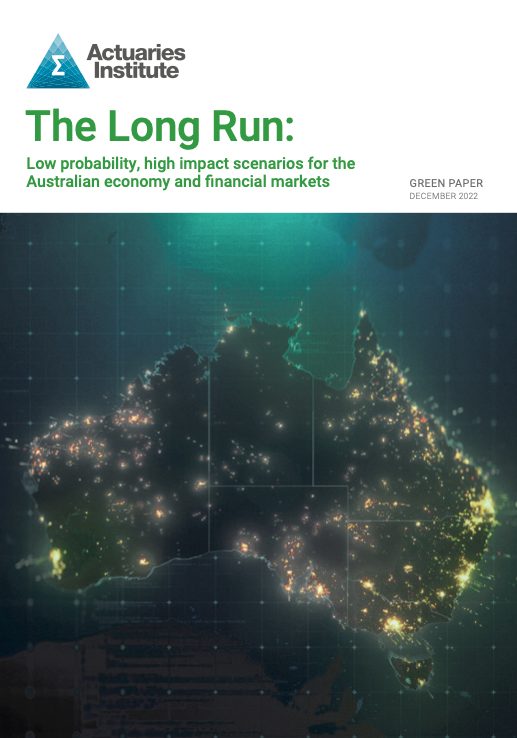
The final Green Paper, The Long Run: Low probability, high impact scenarios for the Australian economy and financial markets, has just been released. It is a collaboration between the Institute and independent economist Michael Blythe with an actuarial overlay provided by Hugh Miller and Doug Isles. These types of scenarios can cause significant disruption and require the greatest adjustments. Understanding the implications and having a gameplan in place are powerful supports for decision-makers. The baseline scenario is the central case for the economy as it stood in late 2022. It assumes a recession is avoided and, once near-term drivers have run their course, the economy and markets converge on longer-term parameters. The alternative future scenarios explored are stagflation (high inflation and high unemployment), a major correction in house prices, and adoption by policymakers of Modern Monetary Theory (MMT – essentially an unconstrained budget). All three alternative futures involve a significant recession sometime over the next 15 years. We encourage readers to add it to their Summer reading list.
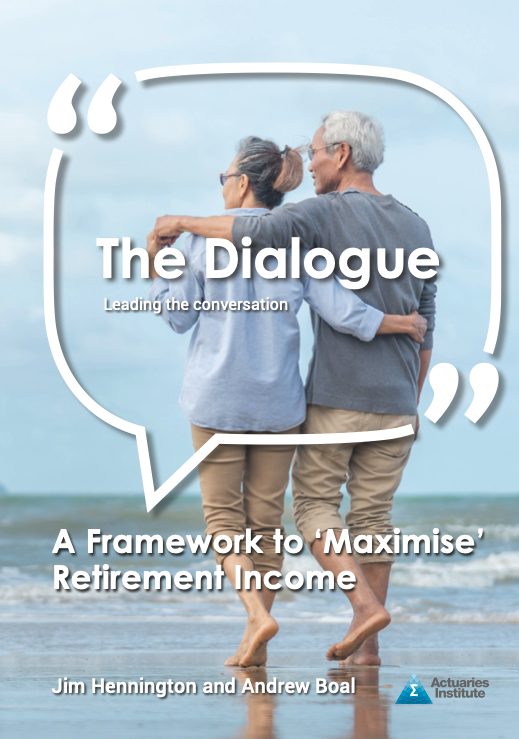 In the area of superannuation, the Institute published two papers. In A Framework to ‘Maximise’ Retirement Income Jim Hennington and Andrew Boal explore how superannuation trustees may need to approach any quantitative requirements and analysis to satisfy Australia’s Retirement Income Covenant legislation, particularly for the large cohort of ‘middle Australia’. In Uplifting Superannuation Risk-Based Capital Management the authoring working group aim to assist superannuation trustees uplift their approach to risk-based capital management by providing a framework and practical examples. Many of the elements explored in that Research Paper have come up in the subsequent APRA consultations on Strengthening Crisis Preparedness.
In the area of superannuation, the Institute published two papers. In A Framework to ‘Maximise’ Retirement Income Jim Hennington and Andrew Boal explore how superannuation trustees may need to approach any quantitative requirements and analysis to satisfy Australia’s Retirement Income Covenant legislation, particularly for the large cohort of ‘middle Australia’. In Uplifting Superannuation Risk-Based Capital Management the authoring working group aim to assist superannuation trustees uplift their approach to risk-based capital management by providing a framework and practical examples. Many of the elements explored in that Research Paper have come up in the subsequent APRA consultations on Strengthening Crisis Preparedness.
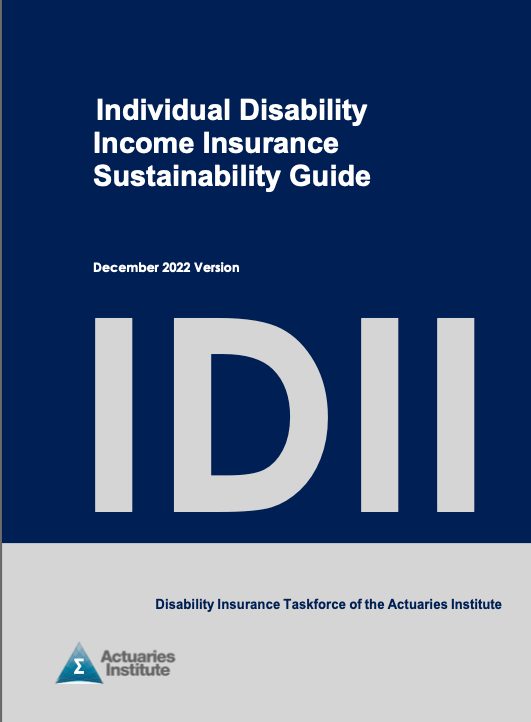 Other publications include the Disability Insurance Taskforce’s revised Sustainability Guide (now as principles-based) and a correspondingly updated Findings and Recommendations document, and a forthcoming paper An Introduction to Space.
Other publications include the Disability Insurance Taskforce’s revised Sustainability Guide (now as principles-based) and a correspondingly updated Findings and Recommendations document, and a forthcoming paper An Introduction to Space.
The COVID-19 Mortality Working Group examined How COVID-19 has aff
ected Mortality and Morbidity in 2020 & 2021 in a detailed Research Note, and continued their monthly analysis of ABS data and State and Territory surveillance data. By their analysis, total excess mortality from or with COVID-19 for the first eight months of 2022 (the latest available) is 13% (+15,400 deaths) and COVID‑19 is expected to be the third leading cause of death in 2022. 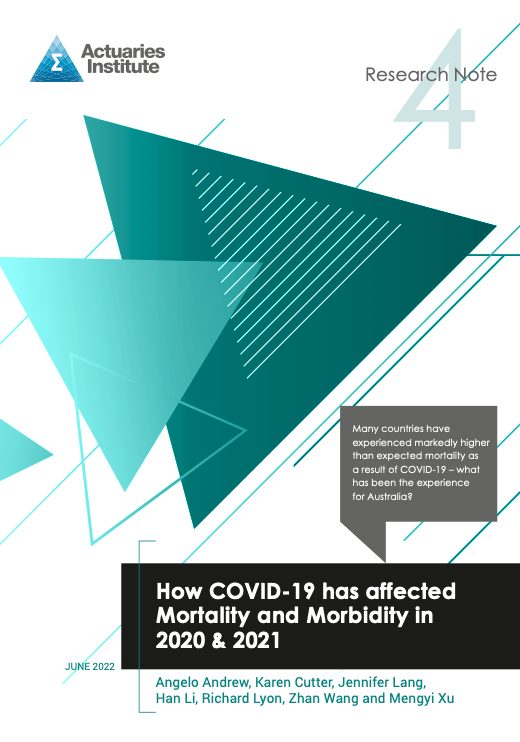
The most recent release of the Australian Actuaries Climate Index (AACI) shows Winter was the 46th of 47 seasons in which the frequency of extreme weather and changes in sea level across Australia remains elevated above the historical baseline (of 1981-2010).
The Public Policy Team also facilitated the first year of the Institute’s Indigenous Engagement Program, centred on self-reflection and providing members and staff the opportunity to build their awareness of Indigenous issues through AITSIS’ CORE Cultural learning course.
The Institute made more than 30 submissions, more than half in relation to superannuation and investments, and to agencies including APRA, ASIC, ATO, Department of Prime Minister and Cabinet, Productivity Commission and Treasury.
The Institute greatly appreciates the vital contribution that our volunteers make to enrich public policy discussions and the oversight provided by the Public Policy Council Committee. We encourage members to contact the Public Policy team to find out more about volunteering opportunities and young actuaries to consider the biennial Young Actuaries Public Policy Essay Competition, which closes on 27 January 2023. The winning entry could be a publication in 2023!
References
[1] Climate change and insurance affordability, retrieved from https://www.finity.com.au/2019/10/28/climate-change-and-insurance-affordability
[2] Property Insurance Affordability: Challenges and Potential Solutions, retrieved from https://www.actuaries.asn.au/public-policy-and-media/thought-leadership/other-papers/property-insurance-affordability—challenges-and-potential-solutions
CPD: Actuaries Institute Members can claim two CPD points for every hour of reading articles on Actuaries Digital.






